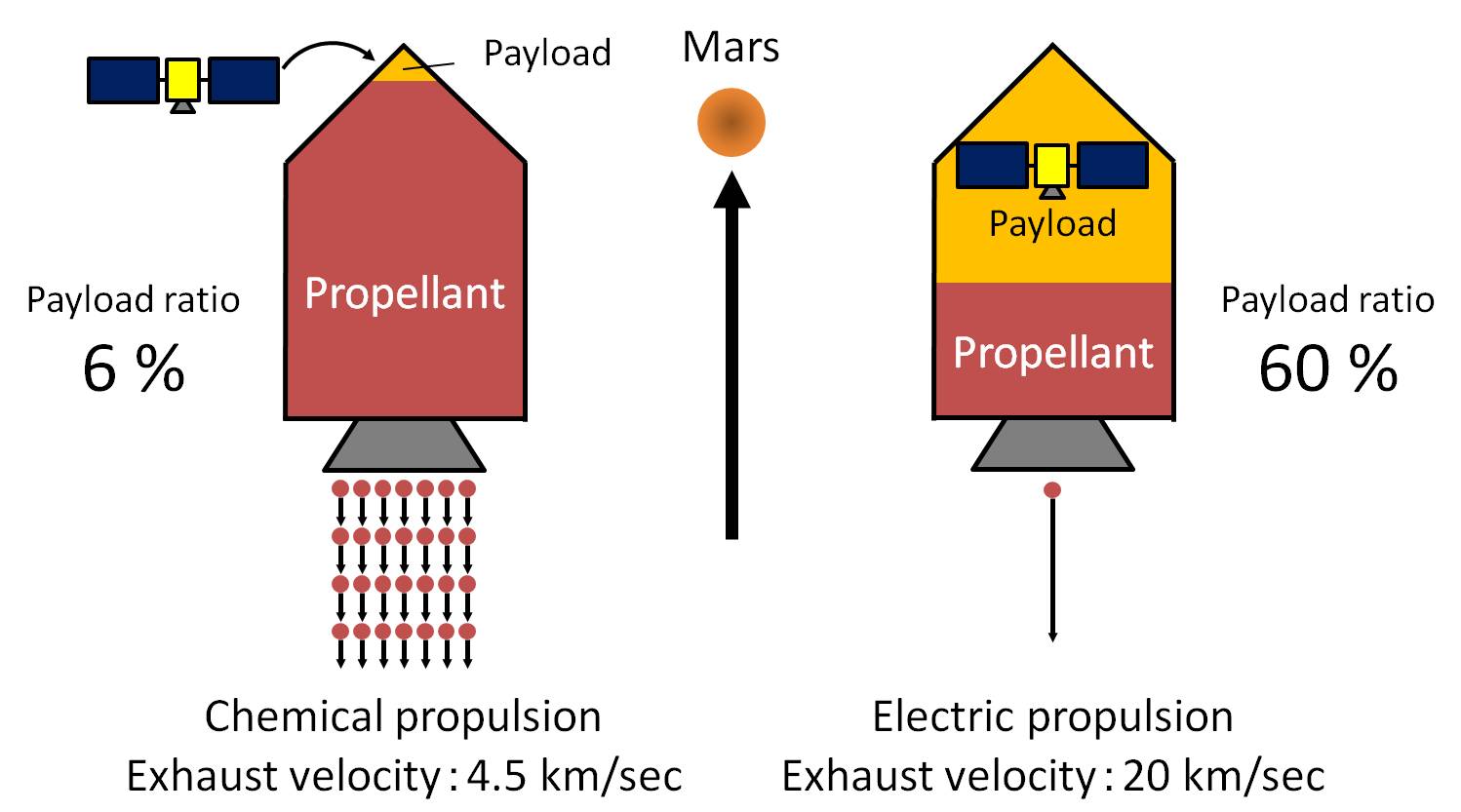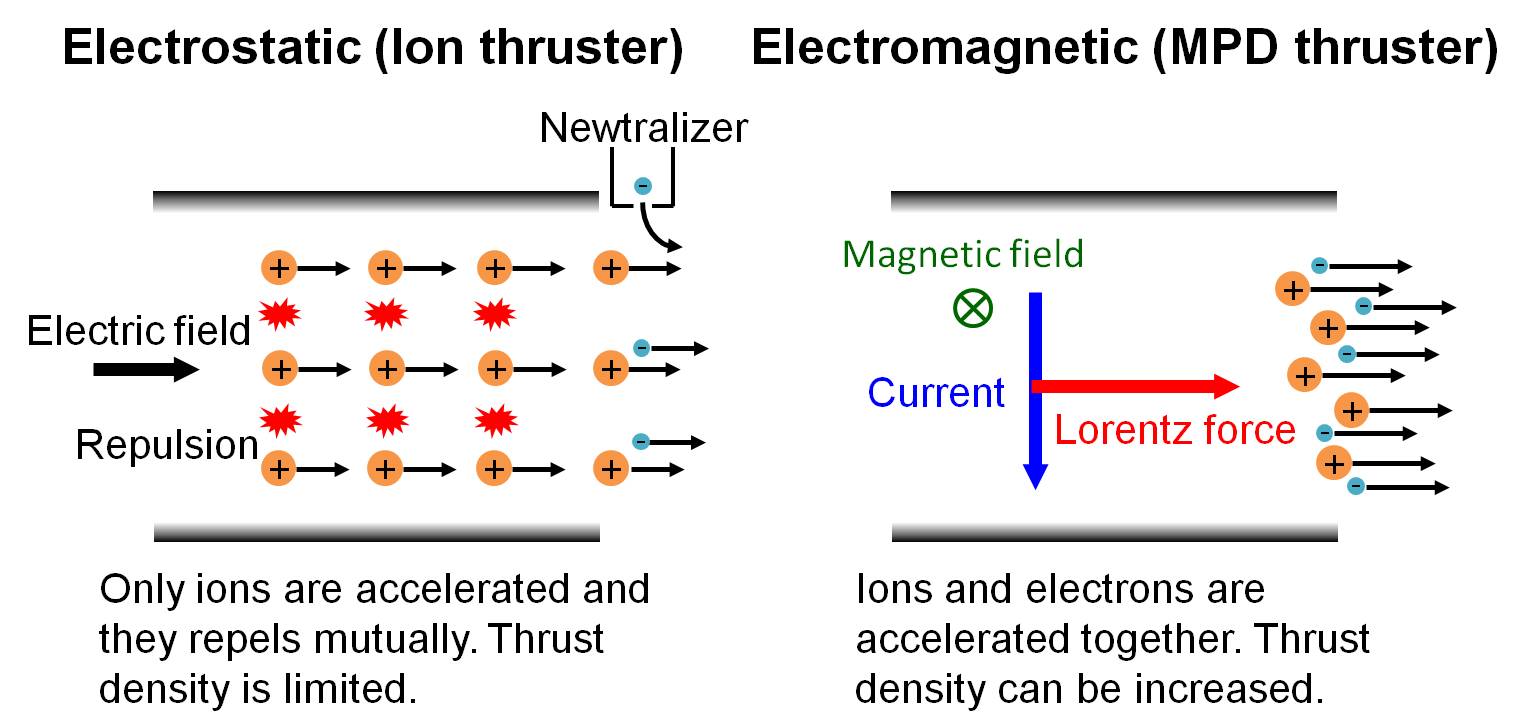MPD Thruster
Deep space explorations or future space transport missions require the high exhaust velocity, and it can not be achieved by chemical fuel combustion energy. For these missions, it is necessary to use "Electric Propulsion" which can use electric energy.
Our laboratory intend to develop the electric propulsion technology with high efficiency and high exhaust velocity using high power.
 Fig.1 Chemical propulsion and Electric Propulsion |
Electric propulsion enables high exhaust velocity so that it is use for missions required high DV. These engines are able to get high DV with small propellant consumption. In other words, the rate of burden (payload) is increased. (Fig. 1)
Furthermore, in the missions required extremely high DV such as deep space exploration, it is impossible to get to the destination by chemical propulsion. Ion thruster used for asteroid probe "Hayabusa" returned from Itokawa asteroid in 2010, is one of the electric propulsion systems.
 Fig.2 Difference of Ion thruster and MPD thruster |
Therefore, it can't increase its thrust density. On the other hand, MPD thruster can accelerate both ions and electrons by Lorentz force in the electromagnetic field, so that it can get large thrust density without repulsion. And more, MPD thruster has features compared to other electric propulsion,
For these reasons, MPD thruster is one of the promising candidates for future high-power electric propulsion systems.
Coaxial MPD Thruster  |
Rectangular MPD Thruster  |
Rotate Magnetic Field Thruster  |
| We have developed a steady-state, co-axial MPD thruster. Varying propellant mass flow rate, applied magnetic field and discharge current, thruster performance test were conducted. As a result, the thrust efficiency increased under row mass flow rate and high magnetic field. We also find that using co-axial geometry, wear on the cathode is very severe and it influences the thruster operation characteristics. | To prevent cathode erosion, we have developed a MPD thruster using hollow cathode which is durable against ion bombard. Using this cathode, prolonging the thruster life time is expected. Furthermore, we employed rectangular acceleration channel to direct the Lorentz force to the exhaust. To develop a thruster with high thrust efficiency and specific impulse, we are currently working on analyzing thrust efficiency and improving the thruster. | One of our approaches for the problem of erosion of electrode, we developed electrodeless thruster. This thruster has no electrode exposed to the plasma. It can ionize the propellant by inductive heating using high frequency solenoidal coil current. We carefully tune the RF current phase to generate rotating magnetic and make azimuthal current. The interaction between this current and external magnetic field generate Lorentz force and accelerate the propellant. |
